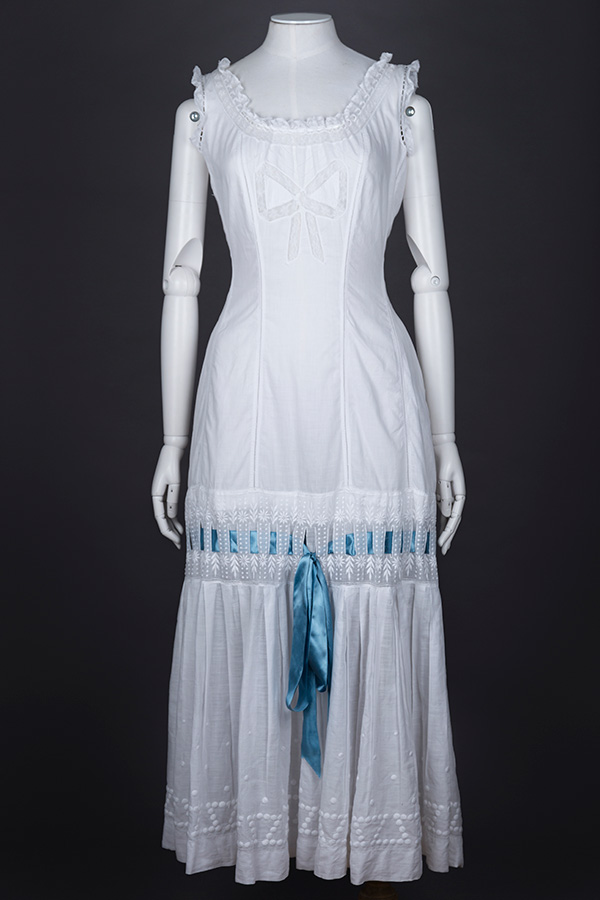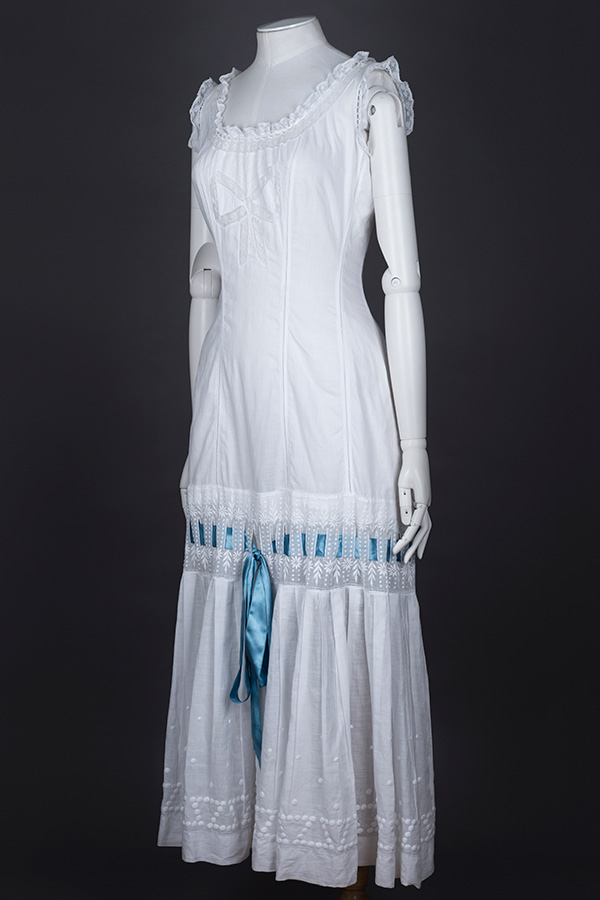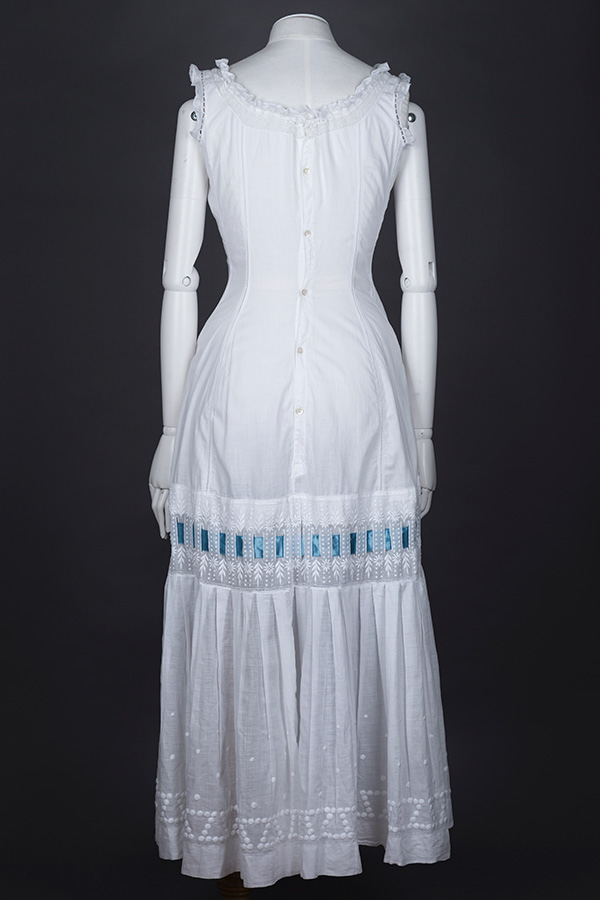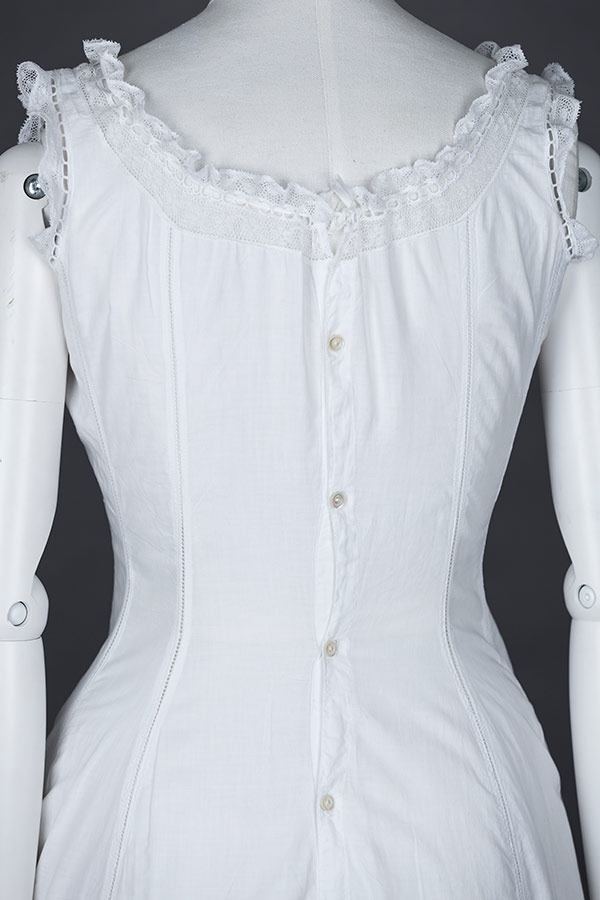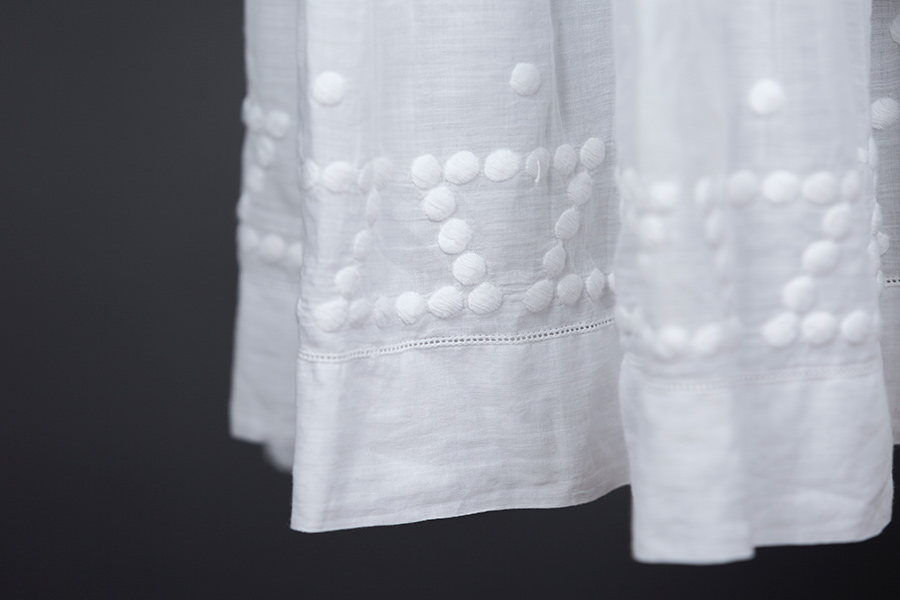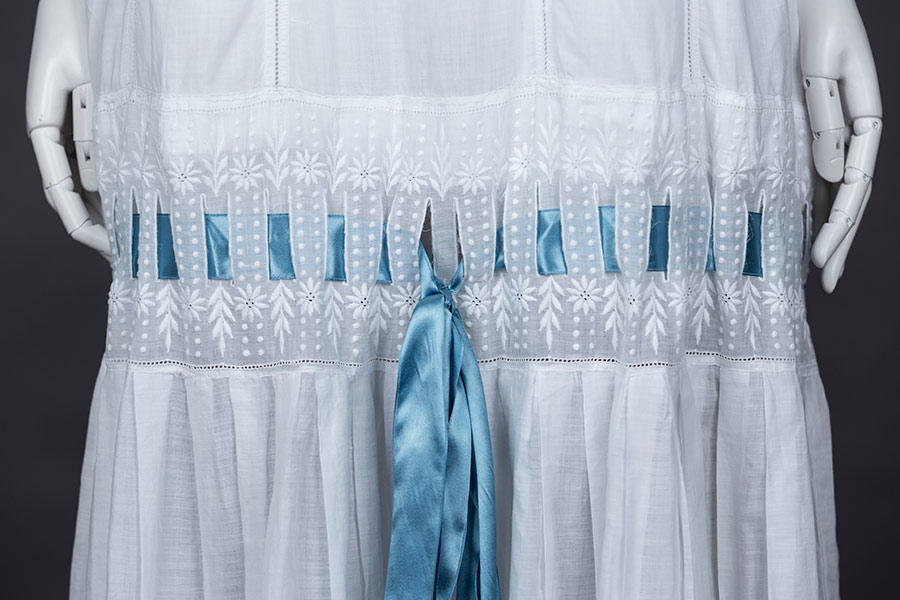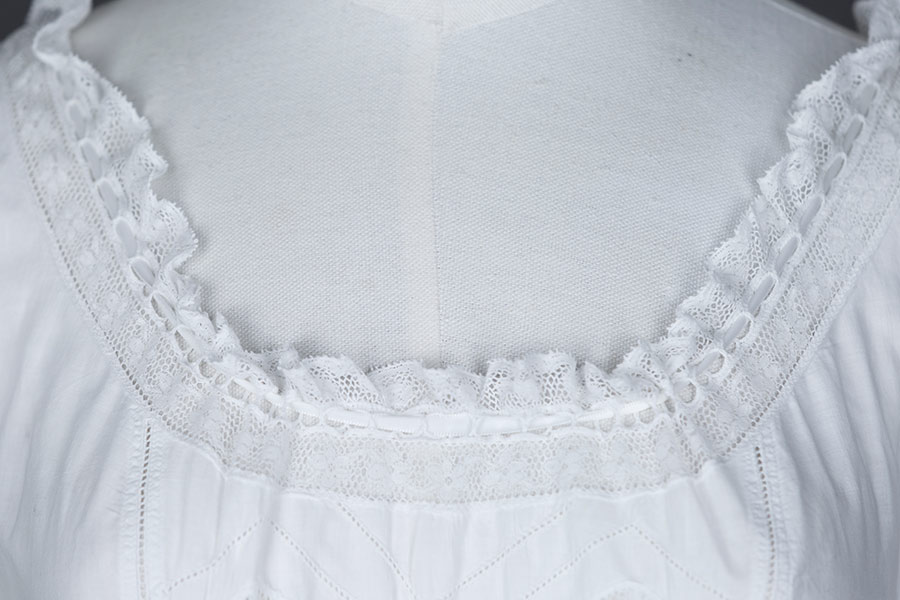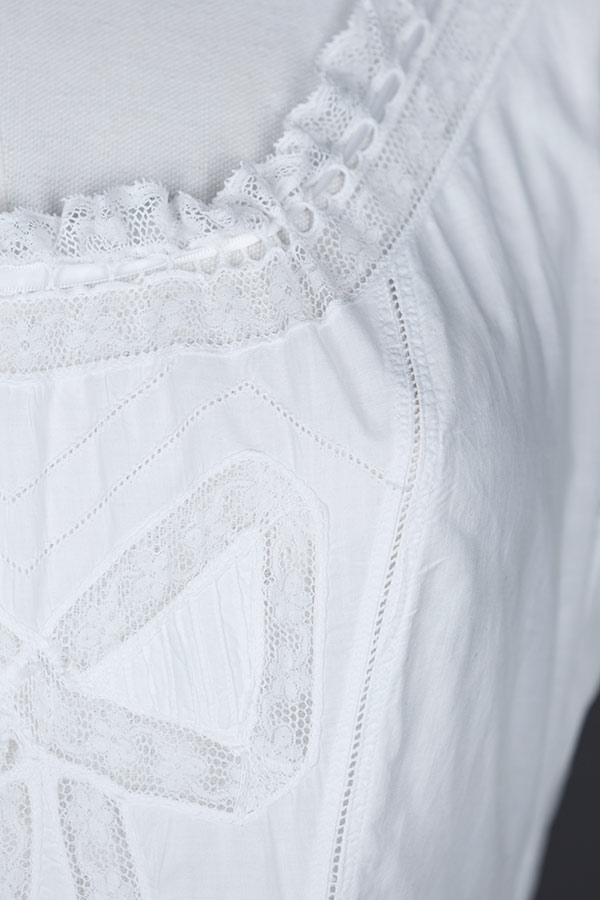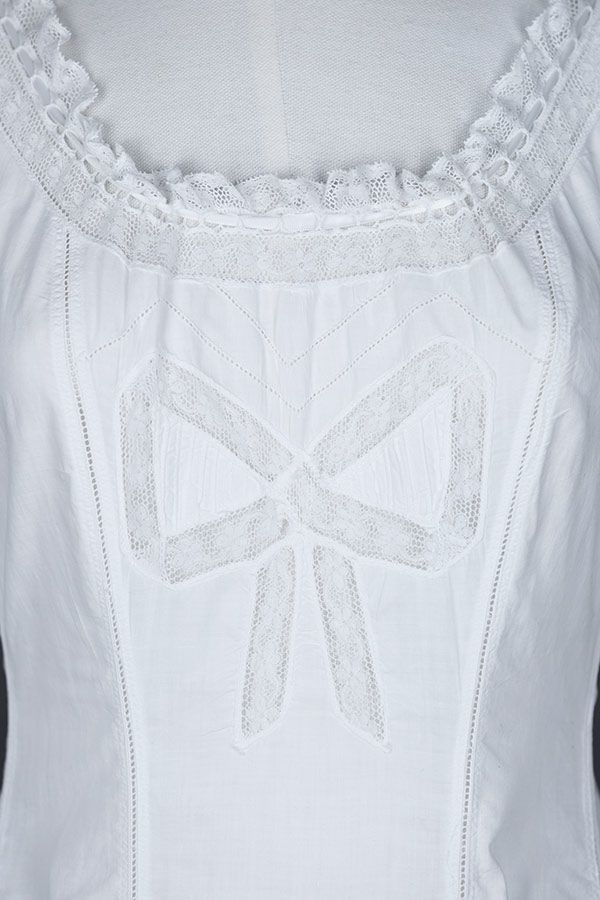Date: c. 1910
Origin: United Kingdom
Fabric: Cotton
This Edwardian chemise is made of an extremely fine cotton lawn and would have been worn directly against the skin, underneath a corset. It has been cut with a princess line down to around the mid-thigh, where a band of decorative ribbon slot embroidery has been inserted. A full skirt has been inserted into the bottom seam of this band. The garment buttons up through the centre back seam as far down as the band of embroidery. There are 5 shell buttons, with hand-worked button holes. The garment would have also fastened with a silk bow at the neckline, through the ribbon slot lace. The centre back seams are encased in a wide cotton lawn binding.
The garment appears to have been sewn largely by a lockstitch machine, with even and neat stitches throughout. The garment is a canvas for intricate and profuse embellishment techniques, many of which can be easily missed upon first glance. Each seam is home to delicate faggoting, a type of embroidery where threads between two seams are tied together in bundles for a ‘ladder’ effect. Both the neckline and underarm are edged with two tiers of valenciennes leavers lace, with ribbon slotting that originally would have been ruched up with silk ribbon (there is still a piece of narrow, white, silk ribbon in the neckline, though this has been damaged and is significantly shorter than it would have been originally).
The centre front panel over the bust has the same valenciennes lace trim used as an appliqué, shaped into a bow motif with the cotton lawn beneath cut away. The lace has been carefully shaped into the curves and lockstitched at the edges. The ‘loops’ of the bows feature panels of delicate machine pintucking, which is lined with a layer of cotton lawn on the garment interior. Above the bow motif are two rows of drawn threadwork, shaped in a zigzag to follow the contours of the bow motif.
The strip ribbon slot strip beneath the chemise bodice has profuse whitework satin-stitch embroidery, in a pattern of flowers, leaves and dots. A wide, blue silk ribbon is threaded through this panel and ties at the front in a large bow. The skirt of the chemise is attached to this strip with wide pleats, giving the skirt fullness. At the bottom of the skirt there is further satin-stitch embroidery in a dot motif. The hem is finished with a plain band of cotton lawn, which has again been seamed with faggoting embroidery.
Although the condition of this garment is overall exceptional, the hem betrays that it was well worn as there are numerous, carefully-worked and often near-invisible repairs undertaken here.
From the collection of Karolina Laskowska
